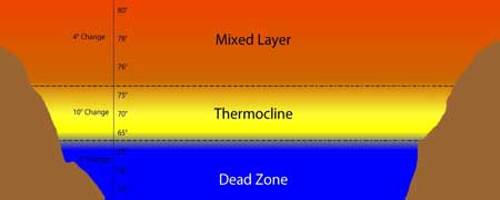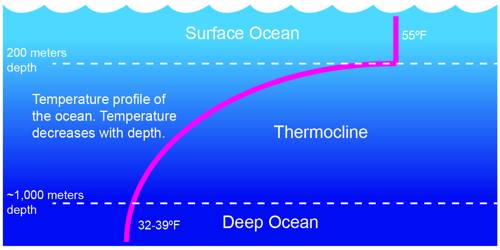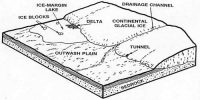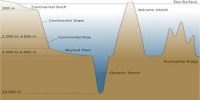Thermocline: Boundary in a body of water where the greatest vertical change in temperature occurs. This boundary is usually the transition zone between the layer of warm water near the surface that is mixed and the cold deep water layer. It is an abrupt temperature gradient in a body of water such as a lake, marked by a layer above and below which the water is at different temperatures. The mixed layer is near the surface where the temperature is roughly that of surface water. In the thermocline, the temperature decreases rapidly from the mixed layer temperature to the much colder deep water temperature.

A thermocline is a lean but separate layer in a large body of fluid (e.g. water, such as an ocean or lake, or air, such as an atmosphere) in which warmth changes further quickly with depth than it does in the layers above or below. It is the change sheet between warmer mixed water at the ocean’s exterior and cooler deep water below. In the ocean, the thermocline divides the upper mixed layer from the calm deep water below. Depending largely on season, latitude and turbulent mixing by wind, thermoclines might be a semi-permanent characteristic of the body of water in which they happen, or they might shape momentarily in reaction to phenomena such as the radioactive heating/cooling of surface water during the day/night.
















